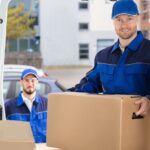Cabin beds have become a popular choice for children’s bedrooms, offering a versatile solution for sleep and play. Many parents wonder about the ideal age range for these elevated sleeping spaces. While cabin beds are generally suitable for children aged 6 and above, there’s no strict upper age limit.
The suitability of a cabin bed depends on various factors beyond just age. A child’s size, maturity, and personal preferences all play a role in determining whether a cabin bed remains appropriate. Some teenagers may continue to enjoy the space-saving benefits and unique design of cabin beds for children well into their adolescent years.
As children grow, their needs and tastes change. A cabin bed that once seemed perfect might eventually feel too small or childish. It’s essential to reassess the bed’s suitability periodically, considering factors like comfort, safety, and the overall bedroom layout.
Key Takeaways
- Cabin beds are typically suitable for children aged 6 and up, with no strict upper age limit
- The appropriateness of a cabin bed depends on factors like size, maturity, and personal preferences
- Regular reassessment of the bed’s suitability is important as children grow and their needs change
Determining the Appropriate Age for Cabin Beds
Cabin beds offer unique sleeping arrangements for children, but age plays a crucial role in their suitability and safety. Parents should consider several factors when deciding if a cabin bed is right for their child.
Safety Considerations
Most manufacturers recommend cabin beds for children aged 6 and above. This age guideline ensures kids have the physical coordination to safely navigate ladders or steps. For children under 4, standard cabin beds may pose significant risks due to their height.
Safety features are essential for all ages. Guardrails should be securely attached to prevent falls. A safety rail on the top bunk is crucial for older children. Ladders must be sturdy and properly secured.
For younger users, lower cabin beds provide a safer alternative. These designs offer storage benefits without the height concerns of traditional models.
Developmental Milestones and Independence
A child’s readiness for a cabin bed often aligns with developmental milestones. By age 6, most children have developed the motor skills and spatial awareness needed to safely use these beds.

Independence is another key factor. Children should be able to climb in and out of bed without assistance. They must also follow safety rules consistently.
Cabin beds can foster a sense of autonomy. The added responsibility of maintaining a study area or play space beneath the bed can boost confidence and organizational skills.
Cabin Bed Features for Different Age Groups
Different cabin bed styles cater to various age ranges. Mid-sleeper beds, with a moderate height, suit children 6-10 years old. These often include a play den or study area underneath.
High sleepers are better for older children and teens. They maximize floor space for desks or storage solutions. The increased height requires more advanced climbing skills.
For all ages, mattress size matters. Ensure the bed accommodates your child’s growth. Single or small double sizes are common choices.
Customizable features like removable tent covers or interchangeable desk setups allow the bed to grow with your child, extending its useful lifespan.
Maximizing Bedroom Space and Utility
Cabin beds offer innovative solutions for optimizing space and functionality in children’s bedrooms. These versatile designs incorporate storage, work areas, and play spaces to make the most of limited square footage.
Innovative Storage Solutions
Cabin beds excel at maximizing storage capacity. Built-in drawers beneath the mattress provide ample space for clothing, toys, and bedding. Some models feature pull-out trundle drawers for even more storage options. Cupboards and shelving units integrated into the bed frame offer additional organization possibilities.
High-sleeper cabin beds take storage to new heights. These elevated designs create a sizeable area underneath for larger storage solutions like wardrobes or chests of drawers. This vertical use of space is particularly beneficial in smaller bedrooms.
Mid-sleeper cabin beds strike a balance between storage and accessibility. Their moderate height accommodates under-bed storage while remaining easy for younger children to climb in and out of safely.
Bedroom Furniture for Efficient Living
Cabin beds serve multiple purposes, reducing the need for separate furniture pieces. Many designs incorporate a built-in desk, creating a dedicated study area without sacrificing floor space. This dual-function approach is ideal for compact rooms.
Pull-out desks offer flexibility, allowing the workspace to be tucked away when not in use. Some cabin beds include fold-down tables, providing a surface for activities or homework that can be easily stowed.

Trundle beds are another space-saving option. These designs feature a second mattress that rolls out from under the main bed, perfect for sleepovers or siblings sharing a room.
Functional Design Considerations
When selecting a cabin bed, consider the mattress height and overall bed dimensions. Ensure there’s adequate headroom, especially for high-sleeper models. Solid wood construction offers durability and stability.
Safety features are crucial. Look for sturdy guardrails on elevated beds and secure ladder attachments. Some designs incorporate built-in nightlights or reading lamps for added functionality.
Assembly complexity varies between models. Consider ease of setup, especially if you plan to move or reconfigure the room in the future. Modular designs offer flexibility, allowing you to adapt the bed as your child’s needs change.
Conclusion
Cabin beds offer versatile sleeping solutions for children, but their suitability depends on age and development. Most experts recommend cabin beds for kids 6 years and older who can safely climb ladders. As children grow, their needs change and cabin beds may become less appropriate.
Parents should assess their child’s maturity, physical abilities, and bedroom space when considering a cabin bed. While these beds can be used into the early teens, older adolescents may prefer more grown-up options. Ultimately, there’s no strict age limit – the decision depends on individual circumstances and preferences.








